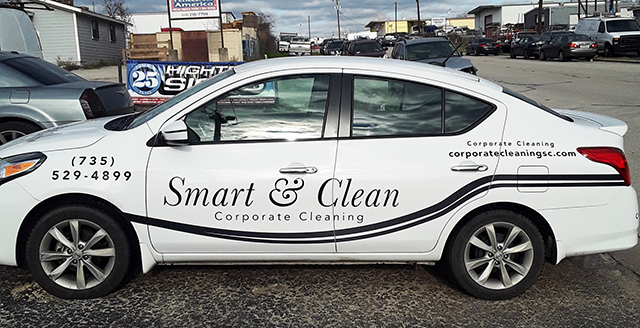If you’re looking for the latest trends on custom stickers for vehicles, you’ve come to the right place! We’ve compiled the latest trends in vehicle decals, including Die-cut stickers, Matte finish, and bright colors. Keep reading to learn more about the trends in vehicle decals and what you can do to incorporate them into your marketing strategy. Then, you’ll be well-equipped to decide which custom stickers you want. This article will come in handy when you seek custom stickers Austin TX.
Die-cut Stickers
Custom die-cut stickers have many advantages over traditional sticker printing. The process of cutting these stickers uses high-speed technology and allows the creation of unique shapes. Not only do these stickers look amazing, but they are also versatile. Because they can be printed on other materials, You can use die-cut stickers for different applications. Some printing companies offer unique die-cut fonts that will enhance lettering styles. For example, you can use them for product promotion and as warning labels on machinery.
Die-cut stickers have high adhesive strength and will stick to most surfaces without causing any damage. They are easily removable using rubbing alcohol or warm soapy water. Custom die-cut stickers can be printed with a wide range of file types. You can customize them to fit almost any shape, from simple rectangles to elaborate geometric designs. They can be made to be shaped and cut to fit your vehicle.
Matte Finish
Two main finishes are available for custom stickers for vehicles: glossy and matte. A shiny sticker has a high shine and shines more than a matte sticker, but the glossy finish also reflects light. Flat stickers are great outdoors, as they are not as noticeable in direct sunlight. However, a glossy finish is best for you if you want to display your custom stickers outdoors.
A matte finish is a higher quality finish than a glossy one. A matte sticker will allow light-colored ink to reflect off the surface. Matte stickers also look better than glossy ones, so choose a matte finish to avoid this. To order matte stickers, you need to specify the size of your stickers. For example, a 10″ x 10″ sticker requires less than half the size of a standard sticker. If you choose a 20″ x 20″ sticker, you’ll need to order at least one.
Bright Colors
If you want to make a bold statement, consider bright colors on custom stickers for vehicles. For example, a VRV streaming company used bright colors on its stickers to promote its company. The stickers depict cartoon characters and caricatures of famous TV and movie icons. Another food company, Blizz, uses brightly colored lettering to promote its products and services. In addition, their glossy, full-color logo is printed in the company’s name.
Choosing the right colors is critical. Many car stickers rely on contrast to catch the eye. Lighter colors can blend into the background and make the logo details challenging to detect. The right combination of bright and dark colors can capture the attention of drivers. Bright colors should also match the tone of other promotional materials. For example, you should use dark colors on your vehicle’s exterior and light colors on its interior. These two colors go well together, as both are highly visible from a distance.
Removable Decals
Removable decals are great for vehicles because they can be easily removed and replaced. They can also be moved from one place to another, allowing the vehicle owner to choose the exact placement they want. Removable decals are the latest trend in custom stickers for vehicles because they are easy to remove and move from one place to another. In addition, it’s easy to switch out your decal without damaging the paint or decal, which is ideal if you want to change the look of your vehicle periodically.
There are two main car decals: the transfer sticker and the removable decal. Transfer stickers are the most common type, and some car decorating experts argue that these are the only valid types of decals. Transfer stickers are made by cutting a design onto vinyl and applying transfer tape to it. As a result, transfer stickers are more durable and smooth than traditional stickers. In addition, removable decals don’t fade or peel after the first drive or rain.
Layering
There are several advantages to layering custom stickers for vehicles. These stickers are more durable than plain ones and look better when applied to a flat surface. It also allows for easy removal of the stickers, making them perfect for temporary application to a vehicle. Depending on the style you want to achieve, you can layer one or more stickers. Typically, stickers come with three layers: the non-adhesive transfer tape, the sticker itself, and the backing paper. Applying them is as easy as pressing them together.
You will use the design of your sticker during the manufacturing and printing process. Your local print shop can advise you on which type of printing is best for your design. The decal is printed and produced, so it is essential to understand how each layer fits together. Knowing how each layer adheres to one another will make the final product durable. This is especially true if you are planning to apply your sticker to a vehicle outdoor.



